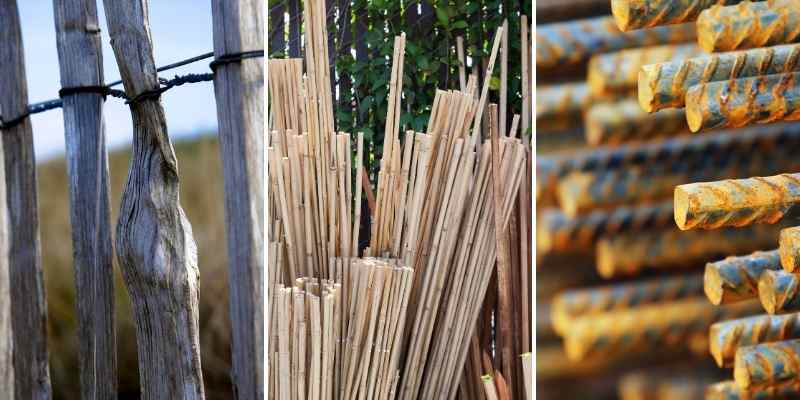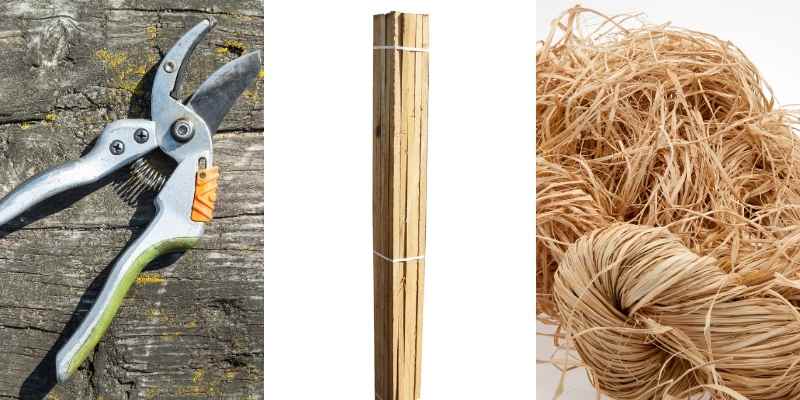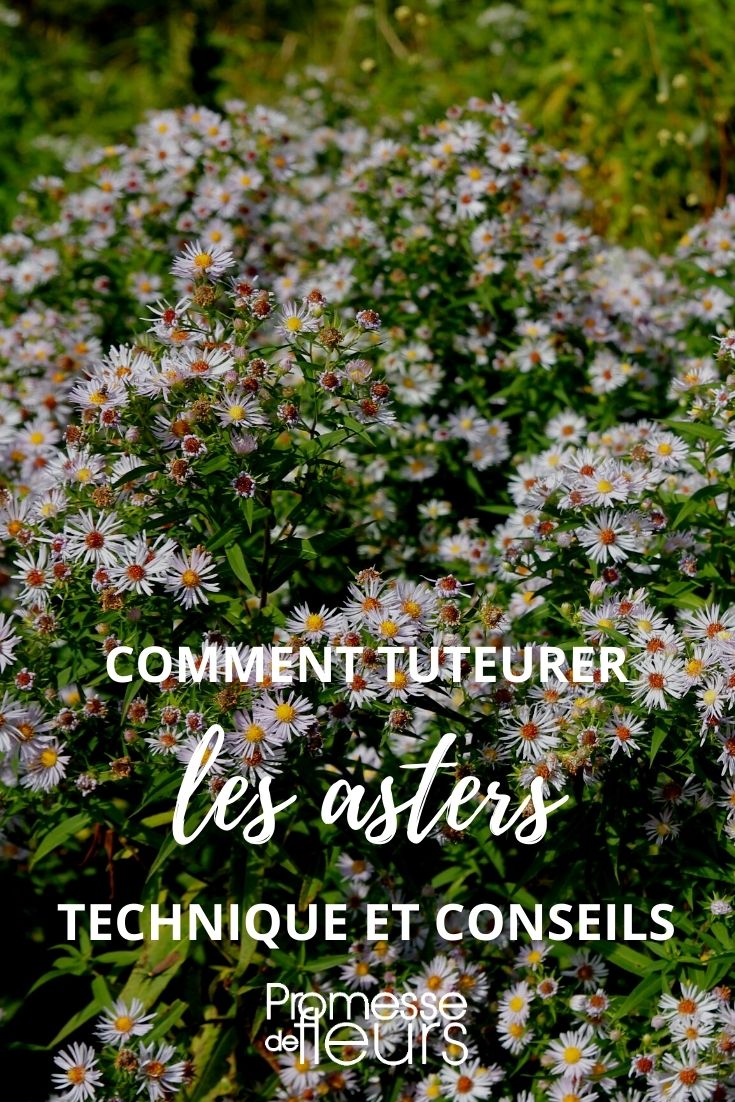With their generous flowering and exuberant vegetation, asters are the quintessential late-summer star flowers! There are countless varieties, some like the Aster novae-angliae ‘Violetta’ exceed 1 metre in height. They form imposing, upright bushy clumps that tend to flop under the weight of the flowers. Staking is essential to keep these tall asters with their slender, flexible stems looking tidy! The goal: to support the clumps and prevent them from collapsing in wind and rain.
Discover how to install your stakes step by step, the ideal time for staking, and the materials needed to succeed!
→The most beautiful range of Asters is here with us!

What materials are needed for successful staking?
There are several ways to stake asters and different types of stakes that can be used. Depending on the technique chosen, you will need:
- stakes or posts, branches (hazel, chestnut...)
- wire, garden twine
- raffia
- secateurs
A stake! But which stake?
Regardless of the material chosen, to support your asters, simply select stakes whose height matches their mature size, between 1.20 and 1.50 m tall. They will quickly be hidden under the foliage.
- Bamboo canes: authentic, simple and sturdy, 100% natural and biodegradable, they can be reused for at least 3-4 years.
- Plastic-coated stakes: both sturdy and durable, they support plants while blending into the vegetation.
- Rebar: used in a recycling spirit, they're virtually indestructible!
- A wattle fence: these are pointed wooden slats (stakes), often made of chestnut, linked by wire. It's a natural and aesthetic staking solution that works well with the bushy clumps of asters.
- With pruned branches from your garden: you can cut branches from climbing roses, mulberries, hazel, willow, chestnut, acacia, bamboo or tall miscanthus to improvise very natural-looking stakes.
→ A wide range of stakes is available on our site.

Wattle, bamboo, rebar... make attractive stakes that blend into the landscape
When to stake?
Stakes should ideally be installed at planting time - either at the same time or just before - to avoid damaging your asters' roots. You can also wait until your plants reach about 30 to 40 cm. But, be aware that staking early will keep clumps upright and you won't need to straighten them later if they've been damaged by rain or wind. Well supported from the start of growth by a stake, your asters can develop harmoniously, especially in windy locations.
How to stake?
A stake should be planted a few centimetres from the main stem. Don't hesitate to drive it deep into the soil, at least 30 cm, to leave a useful height of at least 1.20 m. It should therefore protrude at least 1 m from the soil to properly support your tall asters. It needs to be firmly anchored to prevent clumps from flopping. Always use appropriate ties (plastic ties, soft ties...) to attach stems to their stake, to avoid damaging the plant. Secure the stems to the stake as they grow.
With 4 posts and twine
- Place 4 posts at the 4 corners to create a square around the clump to be staked (adjust according to the mature spread of the chosen variety)
- Firmly drive the 4 posts into the ground, using a mallet if necessary
- Connect them with twine at different heights from the ground: 40 cm, 80 cm, 120 cm and 150 cm
With stakes
Once your stakes are driven into the ground, to attach your asters, you can simply use twine or raffia, which will hold the stems against the posts.
With branches
- With secateurs or loppers, select branches of sufficient diameter
- Cut them to the same height, at least 1.80 m
- Trim the ends to a point to make them easier to plant in the ground
- Drive them into the ground, sinking them at least 30 cm
- Arrange at least 6 to 7 branches around the perimeter of the clump
- To attach your aster stems to the stakes, simply use raffia or twine without pulling too tight to avoid damaging the plant
Our advice: We also suggest pinching your tall asters around June, cutting the stems by a third, or even half, using secateurs. Don't hesitate to try the Chelsea chop! This technique produces more compact, bushier plants. The stems will branch out and be more resistant to wind and rain, and flowering will be even more generous! This pruning will prevent your aster clumps from flopping onto their neighbours once laden with flowers, and may reduce or even eliminate the need for staking.
Finally, watch our video with Stéphane's tips for staking asters.

































Comments